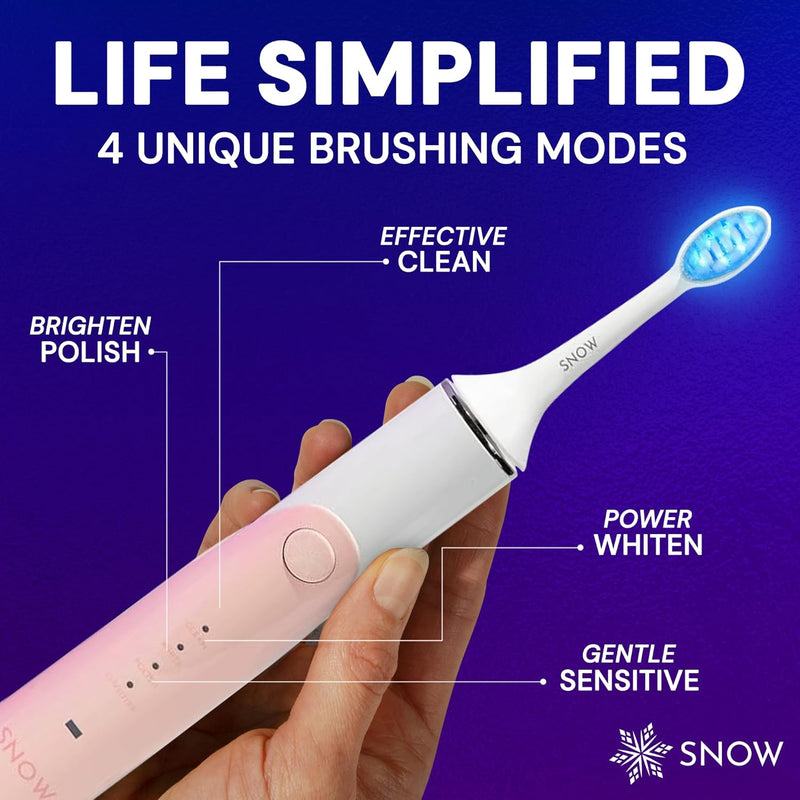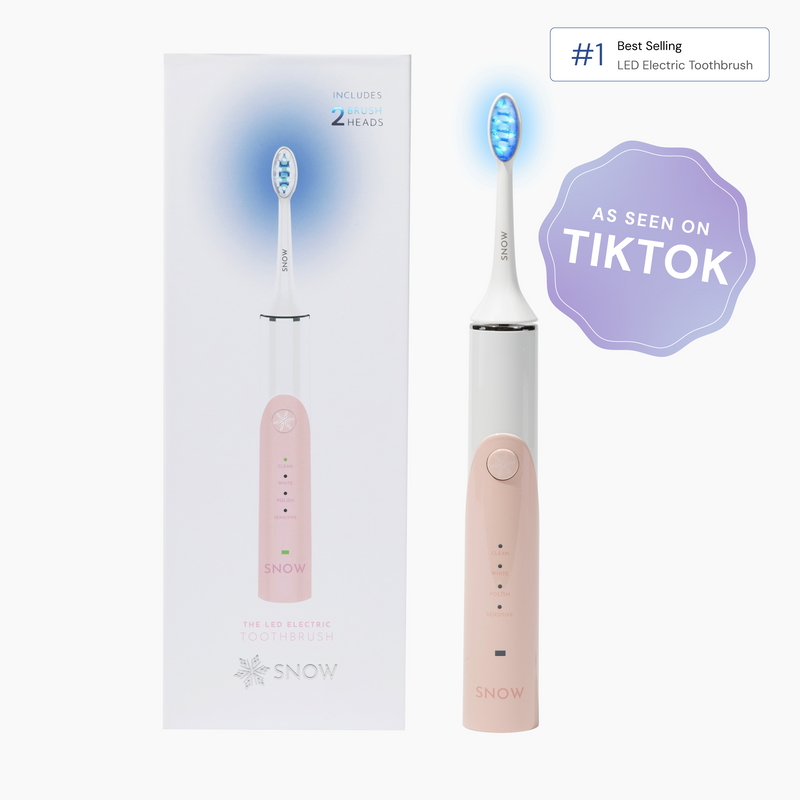A snaggle tooth grows out of position with the rest of the teeth. A person can have either one misaligned tooth or multiple misaligned teeth. Metal braces or other treatments are commonly used to straighten them.
Because even a single misaligned tooth can cause problems with the arrangement of adjacent teeth, people with several crooked teeth are more inclined to choose metal braces because they appear to be more effective and long-lasting.
Snaggle teeth are frequently seen as a negative personality trait that can devastate a person's confidence. On the other hand, some individuals find it desirable, as we see in Japan, where people like to have crooked teeth.
Let's learn about snaggle teeth and how to cure them.

WHAT EXACTLY IS A SNAGGLE TOOTH?
A snaggle tooth is uneven, odd-shaped, or protrudes.
This is merely a tooth that is out of place in your mouth. It might be rotated at an angle while your other teeth are not, or it could be pushed ahead or behind your other teeth. A damaged snaggle tooth may also have a pointed look.
A snaggle tooth seldom causes major dental hygiene problems, but it might make you self-conscious about your appearance. A snaggle tooth is regarded as stylish or attractive in certain places. However, it is not considered part of an ideal appearance in the United States.
A snaggle tooth shows that your teeth are too close together. It is a relatively simple condition to correct.
THE MOST COMMON CAUSES OF A SNAGGLE TOOTH
A snaggle tooth can be caused by several factors, including:
- Overcrowding of teeth, which may or may not be caused by impacted wisdom teeth.
- Sucking one's thumb as a child.
- Early tooth loss affects the eruption of the underlying permanent tooth.
- Poor or changing tongue posture, which can affect tooth alignment.
- Bruxism (tooth grinding), can cause teeth to shift out of position over time.
The snaggle tooth may be one of many abnormalities that must be corrected, depending on the cause. In other cases, the deviation is minor and can be treated independently.
WHAT KINDS OF PROBLEMS CAN SNAGGLE TEETH CAUSE?
A crooked tooth may be nothing more than an aesthetic problem. However, depending on the tooth's form, angle, and position, it may create more significant complications if left untreated.
Brushing and flossing might make it harder to maintain a snaggle tooth clean and healthy when it overlaps with other teeth. Bacteria form plaque in the region, contributing to tooth decay or gum disease.
If your snaggle tooth is caused by overcrowding or a gap left by a lost tooth, it may continue to drift over time. Your other teeth may also begin to shift out of place.
If you have difficulty cleaning the region surrounding a misaligned tooth or have any concerns, you should consult your dentist.
5 WAYS TO REPAIR CROOKED TEETH
-
BRACES
Braces have been used for years to straighten out-of-place teeth. They apply pressure to your teeth through brackets (one on each tooth) and wires (connecting them).
Braces may be worn for a few months or almost two years, depending on the individual's needs. After your braces are removed, you'll need to wear a retainer for the rest of your life to help stabilize your teeth.
Pros
- Reduced tooth spacing and rotational correction do not necessitate a re-do every few years.
- Improvements in tooth alignment and oral-health-related quality of life that last.
Cons
- It can be costly, even if only one tooth is crooked.
- Must be worn for months
- Oral hygiene might be more challenging with braces.
- Maintenance after snaggle tooth treatment, such as wearing a retainer
Cost
Braces can range in price from $4,000 to $10,000, depending on your type, demands, and where you reside. Lingual braces run along the inside of your teeth and will almost certainly be more expensive than regular braces.
Dental insurance may pay them in part or entirely if braces are deemed medically essential.
-
CLEAR ALIGNERS
Clear aligners are translucent plastic trays that are custom-fit to your teeth. When misalignments aren't as bad, they're a popular alternative to braces. There are various brands of clear aligners, and their quality varies.
Some advantages are that they are effective in improving tooth spacing, cost less can be worn for the duration of your repair and look a lot nicer than braces.
Cons
- For more intricate dental alignment issues, braces could be more helpful.
- Not as effective in moving teeth that are excessively rotated.
- The findings will be less accurate if there are substantial occlusion (bite) concerns.
Cost
- Clear aligners can range in price from $1,000 to $8,000, depending on the brand and location. This expense may be covered in part or entirely by your insurer.
-
VENEERS
A dental veneer is a thin covering of porcelain or composite resin that is applied to the front of a tooth. It can assist in safeguarding a tooth while also improving its color and form.
Color and form that appear natural and the fact that it might be less expensive than braces are some advantages. However, the cost depends on the number of teeth treated to produce the smile result you want.
Cons
- Cosmetic procedures are often not covered by insurance.
- Every few years, they must be replaced.
- Fragile and easily broken, especially in persons who clench or grind their teeth.
Cost
- A single veneer can range in price from $500 to several thousand dollars for porcelain veneers.
- Veneers are unlikely to be covered by insurance.
-
TOOTH CONTOURING
Tooth contouring removes a little bit of enamel from the tooth. Tooth contouring may be a possibility if you have a mild snaggle tooth and if it is just one tooth.
Advantages are that it is significantly less costly than braces or veneers, there is no need to replace or change anything once the operation is completed and it is more affordable than traditional braces or veneers for a single tooth
Cons
- Cosmetic procedures are typically not covered by insurance.
- It will only work for some snaggle teeth.
Cost
- Tooth contouring can range in price from $50 to several hundred dollars.
- Insurance may cover it in situations of harm when it is deemed essential.
-
TOOTH EXTRACTION
If your crooked tooth is causing complications for your other teeth, you may need to have it removed. This may require using a single-tooth denture or a dental implant to replace the extracted tooth.
Only in extreme situations of a single crooked tooth will extraction and replacement be required.
However, it provides a long-term solution and replacements can provide a natural-looking form and color that blends in with your existing teeth.
Cons
- It can be costly and may not be completely covered by insurance.
- It takes a long time to recuperate.
- Complications such as post-operative infection are possible.
Cost
- Tooth extraction can cost anywhere from $100 to $500.
- A single-tooth denture could cost several hundred dollars more. A single-tooth implant can cost between $3,000 and $4,000.
- Insurance may cover a single-tooth denture but only part of the cost of an implant.
CONCLUSION
As we've discussed in depth, snaggle teeth can be treated in various ways. The remainder is determined by the number of crooked teeth, the state of oral health, personal preferences, and budget. For long-term results, one must be patient.
FAQS
WHAT CAUSES A SNAGGLE TOOTH?
Snaggleteeth are typically caused by overcrowding, which means there isn't enough room in your jaw for your teeth. As a result, teeth will be pushed out or in, resulting in crooked or protruding teeth.
WHAT DOES A SNAGGLE TOOTH LOOK LIKE?
A snaggle tooth is uneven, oddly shaped, or projects. This is merely a tooth that is out of place in your mouth. It might be rotated at an angle while your other teeth are not, or it could be pushed ahead or behind your other teeth. A damaged snaggle tooth may also have a pointed look.
HOW DO DENTISTS FIX A SNAGGLE TOOTH?
Braces are an option for snaggleteeth, as they are for any misaligned tooth. Your orthodontist will most likely prescribe braces if your snaggle tooth is substantially misaligned, as they are ideal for significant alignment concerns. There are various braces, including mini-braces and those constructed of transparent materials.
HOW LONG DOES IT TAKE TO GET A CROOKED TOOTH STRAIGHTENED?
Straightening your teeth could be done if you wear traditional braces or removable aligners which may take about a year or less.





































































